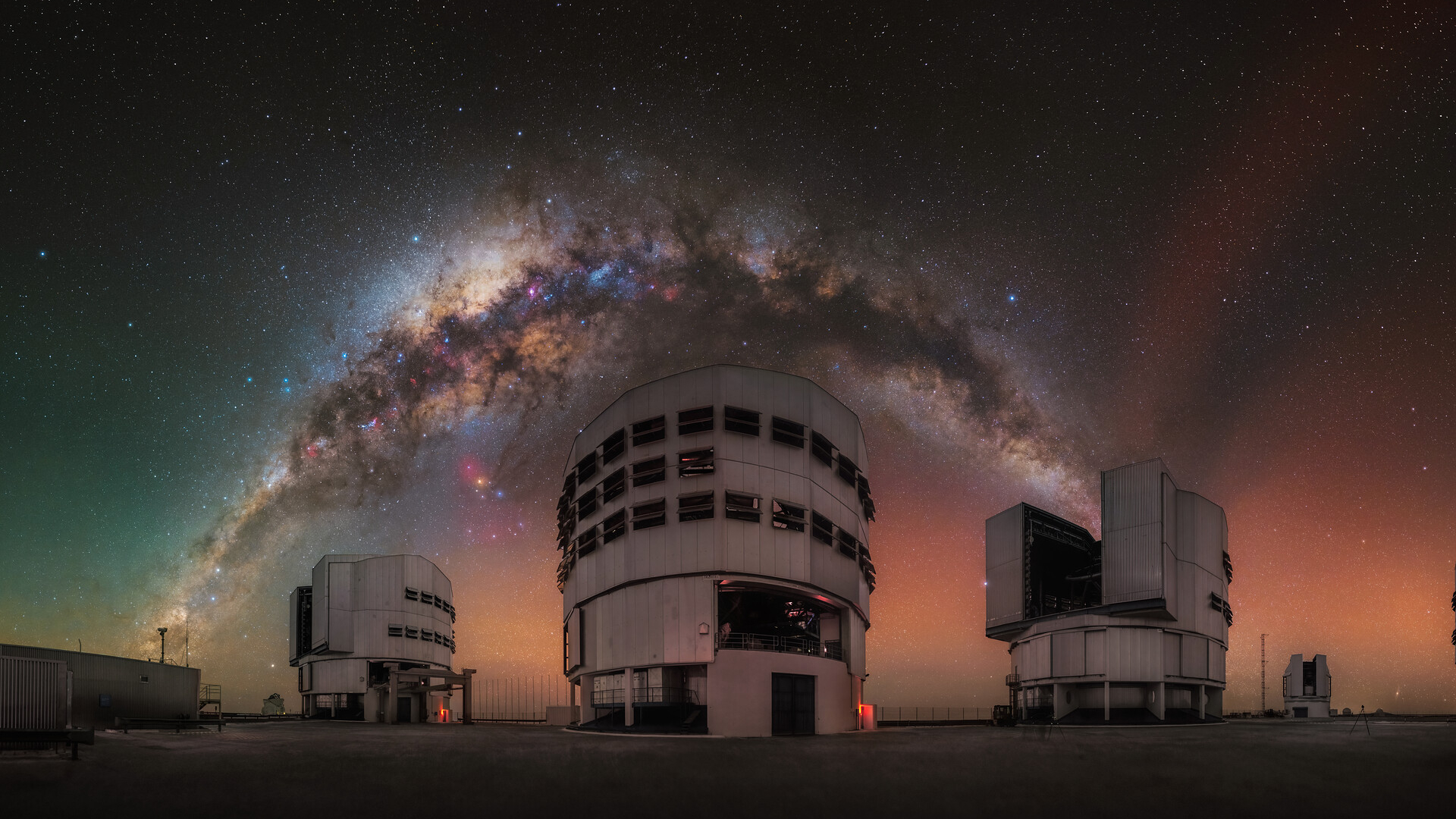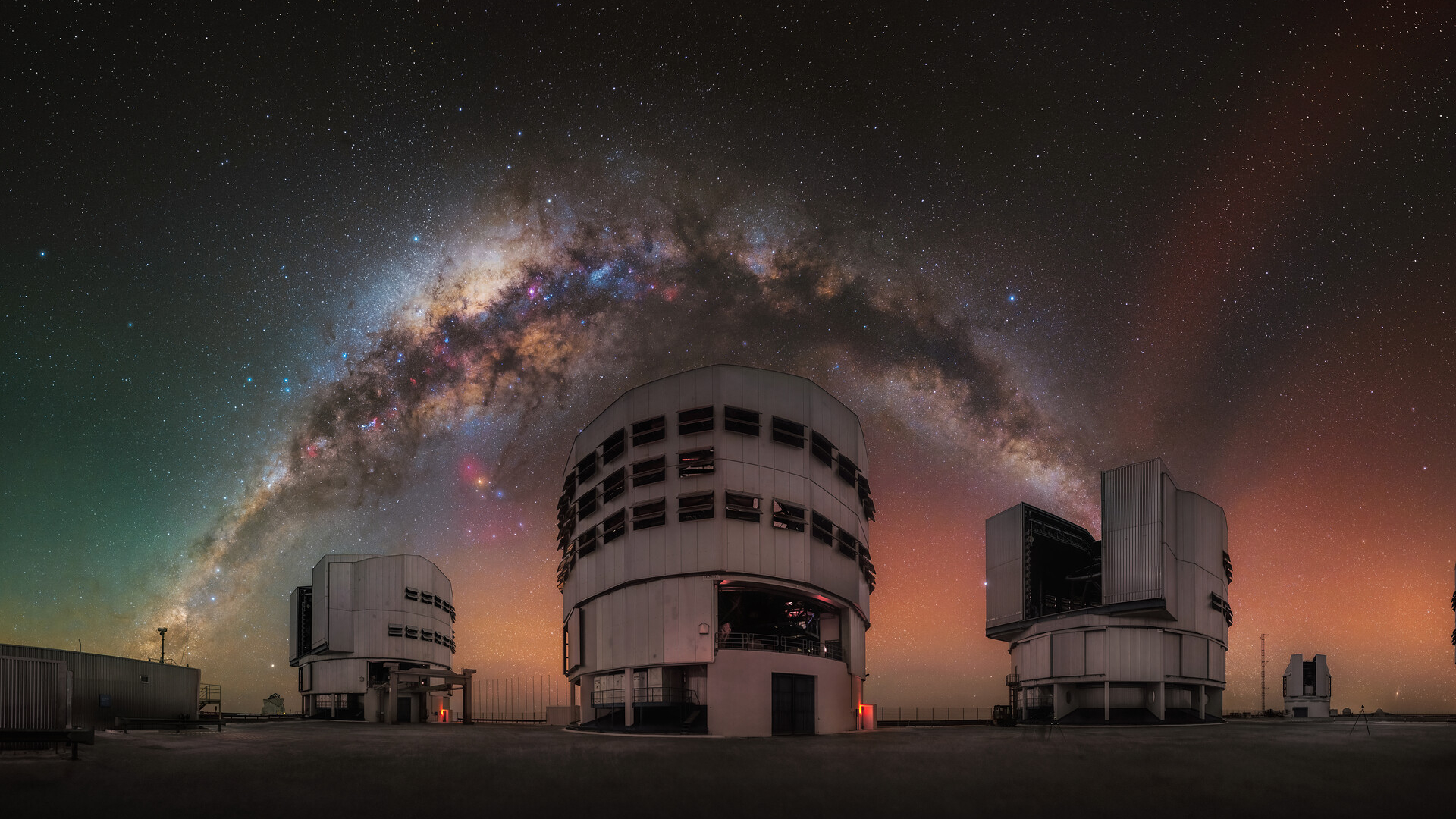Now Reading: The Milky Way arcs over the Very Large Telescope | Space photo of the day for Nov. 5, 2025
-
01
The Milky Way arcs over the Very Large Telescope | Space photo of the day for Nov. 5, 2025
The Milky Way arcs over the Very Large Telescope | Space photo of the day for Nov. 5, 2025

High atop the arid plateaus of Chile’s Atacama Desert, one of humanity’s most powerful astronomical instruments peers into the depths of the cosmos: the Very Large Telescope (VLT). Operated by the European Southern Observatory (ESO), the VLT has long been at the forefront of astronomical discovery, as scientists use its cutting-edge technology to explore distant galaxies, and some, like our own Milky Way, that are closer to home.
What is it?
Where is it?
The VLT is based in the Andes Mountains in the Atacama Desert.

Why is it amazing?
Airglow is incredibly faint, and invisible in most parts of the world because of widespread light pollution. Only in some of Earth’s darkest places, such as the Atacama Desert, can this natural radiance be seen. It is precisely these conditions that make the VLT’s site one of the best observing locations on the planet.
Astronomers are increasingly concerned that even remote observatories like the VLT may one day face the creeping glow of artificial light. Urban expansion, satellite constellations and industrial development all threaten to erode the natural darkness that makes sites like the Atacama Desert invaluable. Protecting these rare darkness sanctuaries is not only an environmental issue, but a scientific and culture one.
Want to learn more?
You can learn more about the Very Large Telescope and ground-based telescopes.
Stay Informed With the Latest & Most Important News
Previous Post
Next Post
-
 012024 in Review: Highlights from NASA in Silicon Valley
012024 in Review: Highlights from NASA in Silicon Valley -
 02Panasonic Leica Summilux DG 15mm f/1.7 ASPH review
02Panasonic Leica Summilux DG 15mm f/1.7 ASPH review -
 03How New NASA, India Earth Satellite NISAR Will See Earth
03How New NASA, India Earth Satellite NISAR Will See Earth -
 04And Thus Begins A New Year For Life On Earth
04And Thus Begins A New Year For Life On Earth -
 05Astronomy Activation Ambassadors: A New Era
05Astronomy Activation Ambassadors: A New Era -
06SpaceX launch surge helps set new global launch record in 2024
-
 07Space Force plans new ‘Futures Command’ amid pressure to speed up modernization
07Space Force plans new ‘Futures Command’ amid pressure to speed up modernization


















